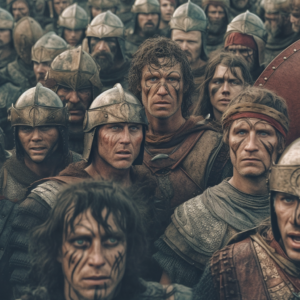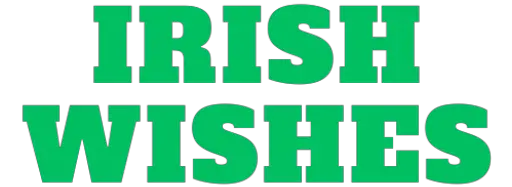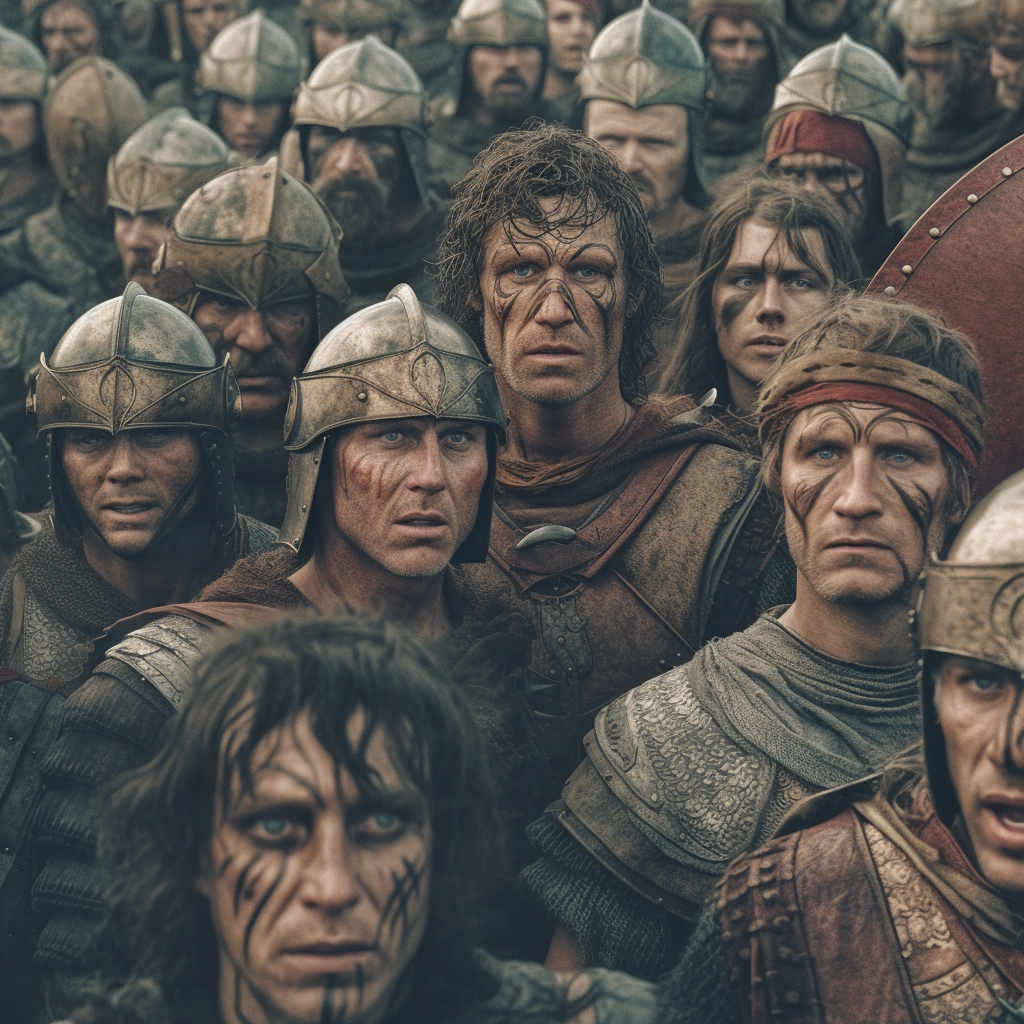The Book of Invasions, also known as “Lebor Gabála Érenn” (The Book of the Taking of Ireland), is a collection of poems and prose narratives that purports to be a history of Ireland and the Irish. It is part of Irish Mythological tradition and was compiled in the 11th century.
Among the many intriguing characters within this text, the Milesians stand out. They are said to be the last people to invade Ireland, and are considered the ancestors of the Irish people today.
Origin and Descent of the Milesians
Míl Espáine and the Iberian Connection
The name “Milesians” comes from Míl Espáine (Soldier of Hispania), and the narrative emphasizes a connection with the Iberian Peninsula. While the link between Ireland and Iberia may have mythical underpinnings, it mirrors broader historical connections between these regions in terms of trade, language, and culture. Some have speculated that this origin story served to explain the Celtic roots of the Irish people.
Genealogy and Lineage
The genealogical details provided in the Book of Invasions trace the lineage of the Irish back to Biblical figures. The Milesians were portrayed as descendants of Japheth, one of Noah’s sons. This genealogical connection may have served to legitimize the Irish people within the broader Christian framework of the time.
The Journey of the Milesians
The Voyage to Ireland
The tale of the Milesians’ voyage to Ireland is filled with magical and natural obstacles, reflecting themes of destiny, struggle, and perseverance. The sea voyage itself may symbolize the journey of life, with its trials and tribulations. The details of the voyage provide a window into the perceptions of travel and navigation during the period.
Confrontation with the Tuatha Dé Danann
The Milesians’ battle against the Tuatha Dé Danann, the divine race inhabiting Ireland, can be seen as a clash between human civilization and natural forces. This confrontation reflects broader themes found in Indo-European mythology, where new forces often displace or integrate with older, divine ones.

Settlement and Division of Ireland
The Land Agreement
The agreement that led to the Milesians’ settlement and the relegation of the Tuatha Dé Danann to the Otherworld reveals a legalistic approach to land ownership and division. It also serves as a mythological explanation for the unseen forces believed to inhabit the Irish landscape.
Division of the Land Among the Sons
Ireland’s division among the sons of Míl illustrates the importance of lineage and territory in medieval Irish society. It provides a mythical explanation for the various provinces and territories, echoing real divisions and rivalries of the time.
Anthropological Perspectives
The Milesians as Ancestors
The portrayal of the Milesians as the human ancestors of the Irish served to create a unified origin myth. This common ancestry could have fostered a sense of identity and solidarity among various tribes and clans.
Integration of Pagan and Christian Elements
The Book of Invasions exhibits an intriguing blend of pagan and Christian elements. The genealogical connection to Biblical figures represents an attempt to synthesize indigenous traditions with the dominant Christian ideology.
The Mythological Landscape
The Tuatha Dé Danann
Understanding the Milesians requires a closer look at the Tuatha Dé Danann, the magical race they defeated. They were divine beings associated with various aspects of nature, wisdom, and artisanship. The interactions between the Milesians and the Tuatha Dé Danann represent a clash of cultures, values, and eras, a theme prevalent in many mythological narratives.
The Druid Amergin
Amergin’s character in the Milesian narrative is multifaceted. He is a druid, poet, and judge, and his wisdom and magic play a crucial role in the Milesians’ success. The poetry attributed to Amergin in the text is considered some of the earliest and most significant examples of Irish verse, reflecting the spiritual connection between the land and its people.
Historical Context
The Milesians and Irish Identity
The story of the Milesians has shaped Irish identity over centuries. The narrative’s power transcends its mythical context, forming a foundation for historical, cultural, and national consciousness. It has been employed by various Irish movements to foster a sense of unity and continuity with a glorious past.
The Book of Invasions and Medieval Society
The compilation of the Book of Invasions occurred during a time of significant societal change in Ireland. It reflects the complex interplay between native tradition and external influences, particularly from Christian culture. The narrative attempts to synthesize these elements into a coherent origin story, fulfilling both political and spiritual needs.
Interpretation and Symbolism
The story of the Milesians has been interpreted in various ways, reflecting different aspects of Irish culture, history, and mythology.
Historical Interpretation
Some scholars see the tale as an attempt to link the Irish with other ancient civilizations, such as those in Greece and the Iberian Peninsula. It is a way to provide a mythological explanation for the ancestry of the Irish, connecting them to the broader Indo-European tradition.
Symbolism and Allegory
The battles between the Milesians and the Tuatha Dé Danann can be seen as symbolic representations of natural human progress, where the Milesians represent a new era, bringing order and civilization to a mythical and magical land.
The tale also finds echoes in Irish nationalism, as the quest for the land resonates with the historical struggles for Irish independence and identity.
Milesians Pronunciation
The Milesians pronunciation is Mill-ease-Ian. To hear it spoken, check out the video below
Want to learn more about Celtic Mythology?
There are a number of great books available on Celtic Mythology. This is one of our favourites. It is from a series on Mythology of 8 great race of peoples (Egypt, Celts etc.).

